Icod de los Vinos has a kind of magic you feel as soon as you wander its streets. This northern Tenerife town sits quietly, but its history and charm are anything but subtle.
When I first visited, I sensed something lingering in the air—especially while standing under the Ancient Dragon Tree. Locals believe this tree is up to 800 years old, and honestly, it’s hard not to feel awed by it. Icod de los Vinos draws travelers who want to get close to Tenerife’s wild side.

I wandered the narrow streets, hearing snippets of local stories. The tree’s thick trunk and twisted branches aren’t just for show—they’re part of the town’s heart. This living legend invites you to dig into deep-rooted heritage and natural beauty.
I left inspired, curious about all the secrets and legends swirling around both the tree and the town itself.
Discovering Icod de los Vinos: A Town Steeped in History
Walking around Icod de los Vinos, I felt like I’d stepped into a living museum. The mix of Spanish colonial charm, old traditions, and relics makes it a true gem on Tenerife.
Cultural Heritage and Traditions
Icod de los Vinos is known for traditions that stretch back centuries. Locals throw lively annual festivals like the Fiesta de San Andrés, where kids ride wooden boards down steep streets—a wild tradition tied to the wine harvest.
These celebrations pull you right in. You can’t help but feel part of the community, even if you’re just passing through.

Image Source: Wikimedia Commons
Wine runs deep here. Icod’s wines made a name for themselves in the 16th century, and families still use old techniques to make them. I visited cellars where owners proudly poured me a glass and shared their stories.
These customs stick around because the people here really care about their roots.
Architectural Styles and Landmarks
The town’s architecture tells its own story. Narrow cobbled streets twist between colonial mansions, whitewashed homes, and colorful buildings with wooden balconies.
Plaza de la Pila, the main square, caught my eye with its peaceful gardens and historic vibe.
The Church of San Marcos, built in the 1500s, stands out with elegant stonework and a Mudejar-style ceiling. I suggest wandering by the Casa del Drago too—it sits close to the Dragon Tree and shows off traditional Canarian design.
Thick walls and shaded courtyards make it both practical and beautiful.
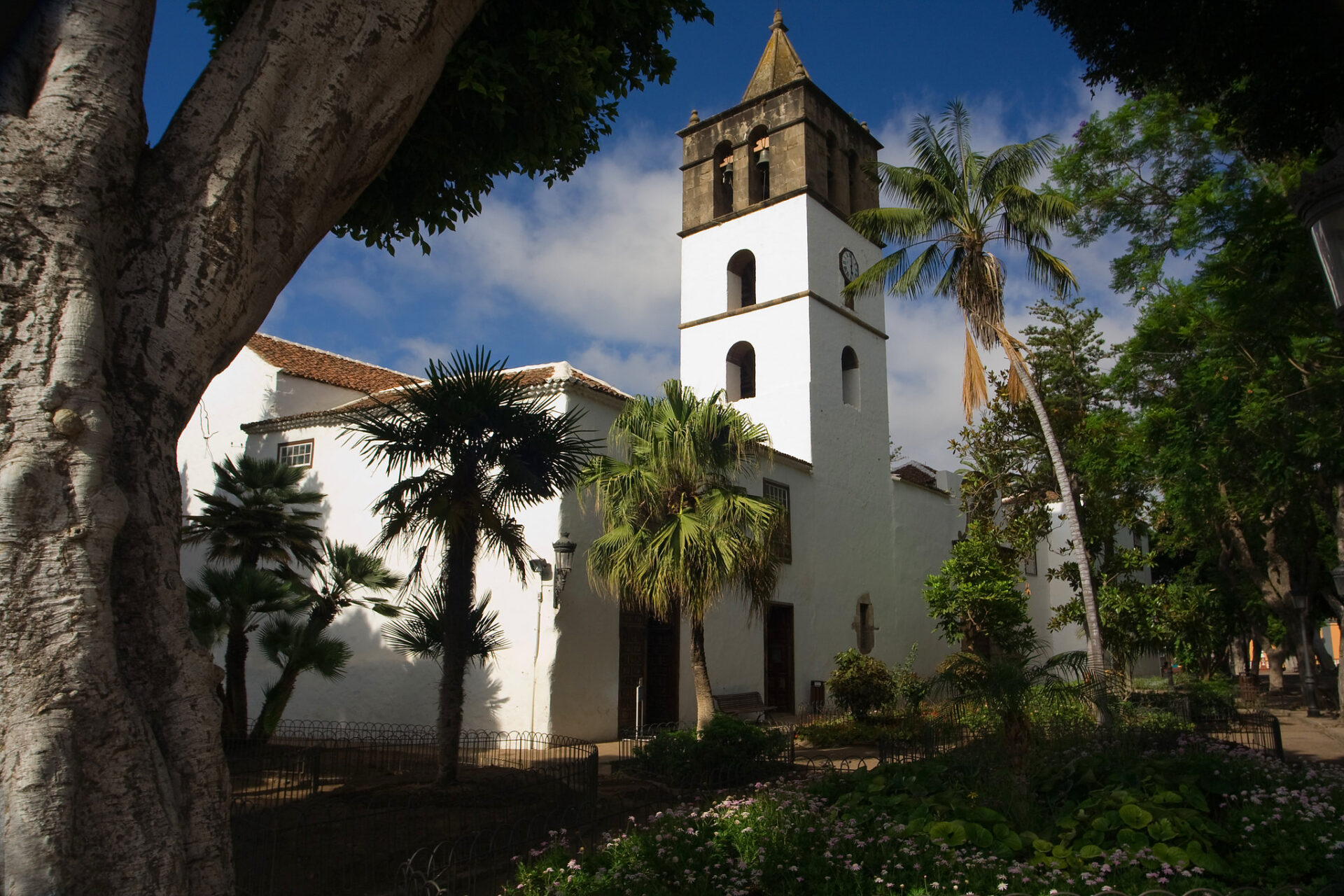
Image Source: Flickr
Local Museums and Archaeological Sites
If you love history, Icod de los Vinos doesn’t disappoint. I spent an afternoon at the Museo de Arte Sacro, which displays religious art, silver, and old garments from the church’s past.
Seeing those pieces brought the town’s spiritual side to life.
Nearby, the Museo Guanche digs into the island’s prehistoric roots with artifacts and dioramas. It’s a must if you want to know about Tenerife’s first people.
I also found ancient caves and burial grounds scattered around Icod. These sites connect you to a side of the island most tourists miss.

Image Source: Tripadvisor
The Ancient Dragon Tree: Legends, Mystique, and Science
Standing beside the Dragon Tree, I felt history, wild legends, and science all colliding at once. This tree has fascinated explorers, scientists, and locals for centuries.
Myths and Local Folklore
Under the Dracaena draco’s massive canopy, I felt surrounded by stories. People here call it El Drago Milenario and whisper about its magical powers.
Some believe the reddish sap is “dragon’s blood,” left behind after epic battles between dragons and heroes.
During fiestas, storytellers gather at the tree’s roots to share tales of ancient Guanche ceremonies. The tree supposedly brings good luck and protection, and you’ll spot its silhouette on souvenirs everywhere in Icod de los Vinos.
Key Local Beliefs:
| Legend | Meaning |
|---|---|
| Dragon’s blood sap | Healing, protection |
| Guanche ceremonies | Sacred, mystical |
| Brings good luck | Symbol of Tenerife |
Locals talk about the dragon tree with real pride. The folklore wraps it in mystery, and honestly, visiting feels almost spiritual.
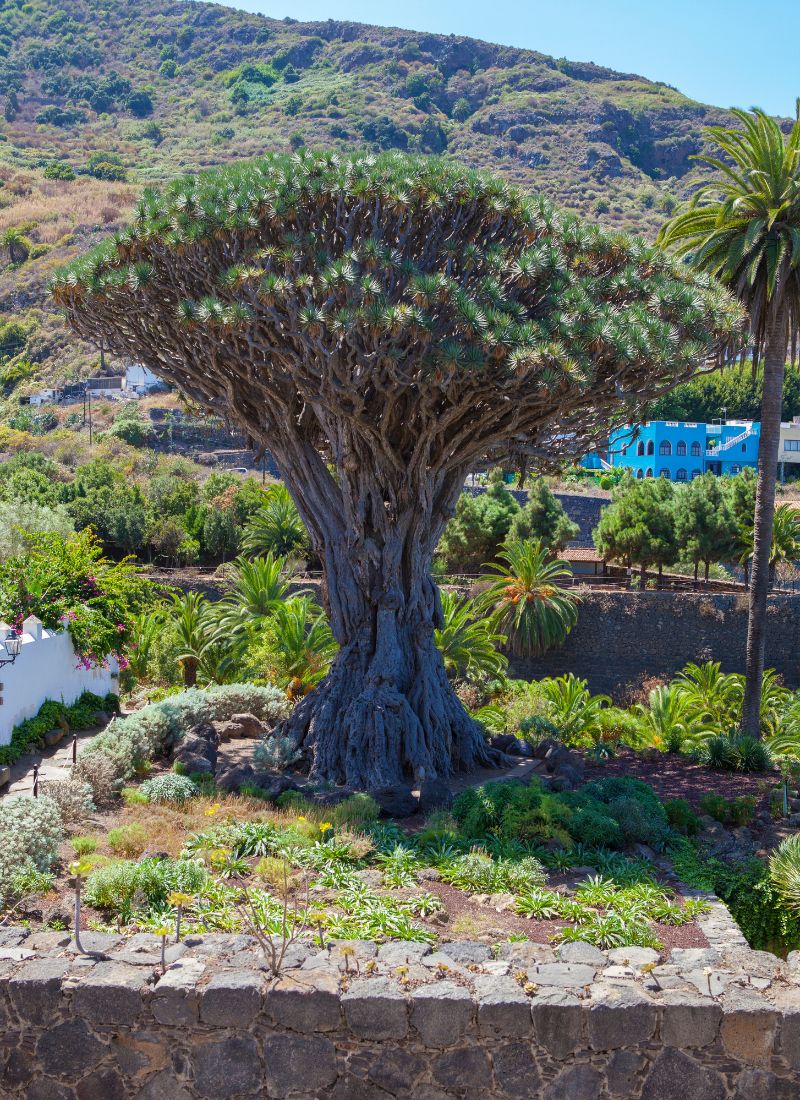
Botanical Significance and Evolution
The Dragon Tree isn’t just a symbol—it’s a rare species that’s been around for millions of years. As I walked through the park, I learned that Dracaena draco grows slowly and can live for centuries.
Scientists think these trees first showed up on the Canary Islands back when dinosaurs roamed.
Unlike most trees, Dracaena draco doesn’t have growth rings. Instead, it branches out each time it blooms, which can take a decade or more.
Old trees like the one in Icod become natural storytellers, recording their history in their wild shapes.
The tree’s ability to thrive in Tenerife’s dry, volcanic landscape really shows how life adapts. It’s kind of amazing to see such a strange, almost alien plant doing so well here.
Charles Darwin and Scientific Discoveries
Darwin never actually set foot in the Canary Islands, but his work inspired others to study oddities like the Dragon Tree. While wandering the gardens, I thought about how isolated places like Tenerife connect to big ideas in evolution.
Scientists who followed Darwin came here, drawn by the tree’s unusual structure. Some compared it to ancient plants, seeing connections in its sap and shape.
Researchers made sketches, collected leaves, and tried to figure out how this survivor fits into the big picture.
Now, the tree stands as a local treasure and a reminder of how islands can preserve evolutionary wonders. I could almost see those early scientists, notebooks out, just as fascinated as I was.
DNA, Age, and Conservation Efforts
Modern research uses DNA and tech to figure out the Dragon Tree’s origins and age. DNA fingerprinting helps scientists see how the Icod tree relates to others across the Canaries.
Some say it’s up to 800 or even 1000 years old, judging by its size and growth. But since it doesn’t have growth rings, nobody can say for sure.
Scientists use measurements and branch counts, comparing them with molecular data. There’s still plenty of debate.
Conservation projects work to protect Dracaena draco from climate change, pests, and people. I noticed signs in the park asking folks not to touch the tree or its roots.
Simple rules like that, plus planting new saplings, help keep the dragon tree alive for the future.
Natural Wonders Surrounding Icod de los Vinos
Icod de los Vinos sits in a landscape shaped by volcanoes, rich wildlife, and a gentle climate. Nature here feels alive, from black sand beaches to forested slopes.
Exploring Volcanic Landscapes
As soon as I hit the trails outside Icod, Tenerife’s volcanic history jumped out at me. Jagged rocks and dark soil tell the story of old eruptions.
I loved exploring the Cueva del Viento, Europe’s largest lava tube. The cave twists underground, packed with rare minerals and strange rock shapes.
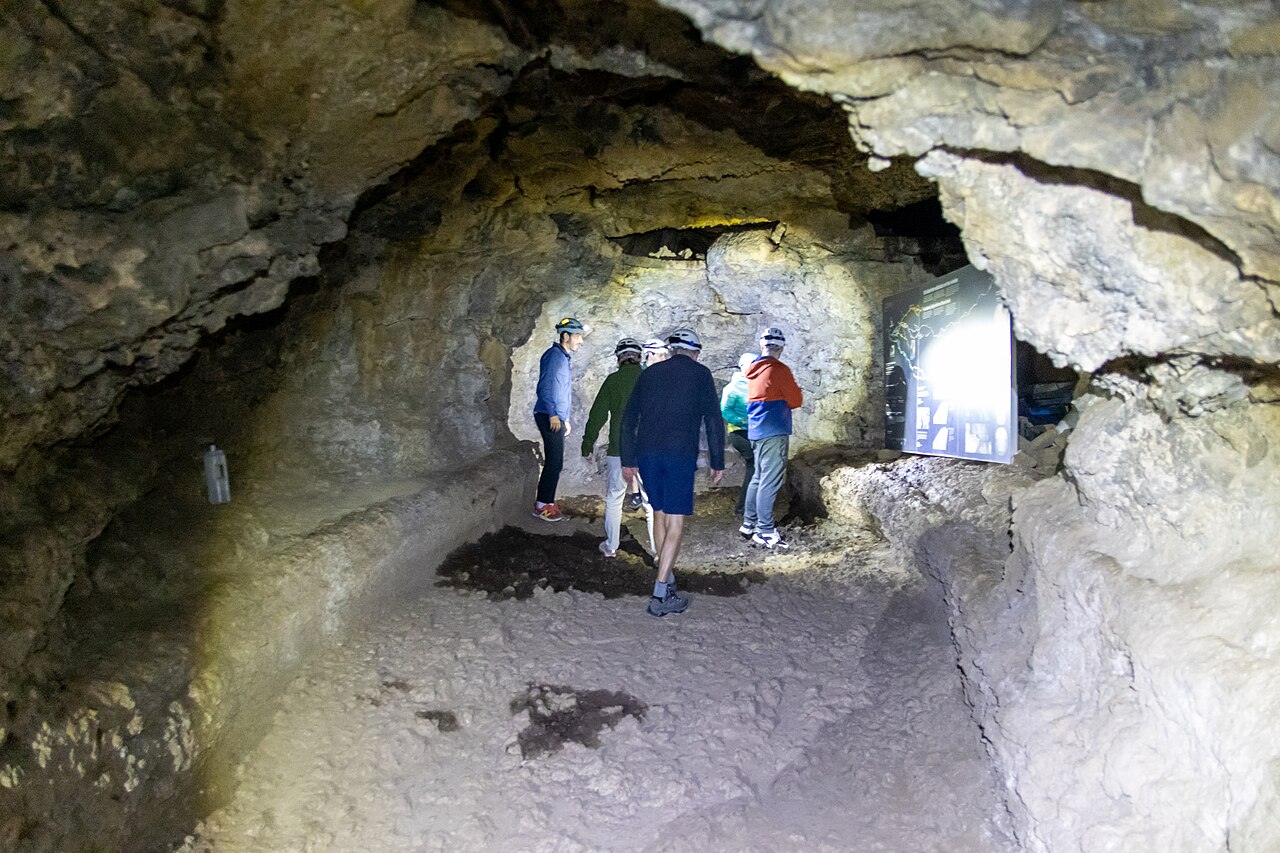
Image Source: Wikimedia Commons
Local guides share stories about eruptions that changed the island.
Above ground, green moss and wildflowers pop against the black volcanic rock. Hiking here feels like walking through a natural monument, and rare plants thrive in these rugged spots.
Diverse Birds and Exotic Animals
Tenerife’s spot on the map makes it a magnet for unusual wildlife. While I wandered near Icod, I spotted bright green parrots, blue chaffinches, and short-toed larks calling from the trees.
The Canary lizard, with its blue spots, scurries over rocks and walls. Spotting one sunning itself always made me smile.
You might even catch a glimpse of geckos or native bats hiding in crevices.
Birdwatchers can find over 60 species around the island, and there are protected reserves close by. For me, early mornings were the best time to see animals before the town woke up.

Climate and Agricultural Riches
Icod de los Vinos enjoys a mild, spring-like climate almost all year. Morning mists roll in from the coast, but sunny afternoons are perfect for exploring vineyards and banana groves.
Volcanic soil helps agriculture thrive. I tasted local wines and sweet dragon fruit, all grown nearby.
Farmers sell fresh cheese, honey, and avocados at markets you can stroll to on foot.
The climate does more than grow crops—it shapes the town’s daily life. Every meal and walk made me appreciate how nature and culture blend here.
Travel Experiences: Day Trips, Tours, and Must-See Attractions
Icod de los Vinos opens the door to some of Tenerife’s coolest scenery and cultural spots. Whether I grab a rental car, join a tour, or just look for a safe, easy day trip, there’s something for every traveler.
Car Tours and Guided Adventures
Driving through northern Tenerife gives me freedom to explore at my own pace. Car tours usually hit El Teide National Park, Garachico’s lava pools, and the famous Dragon Tree.
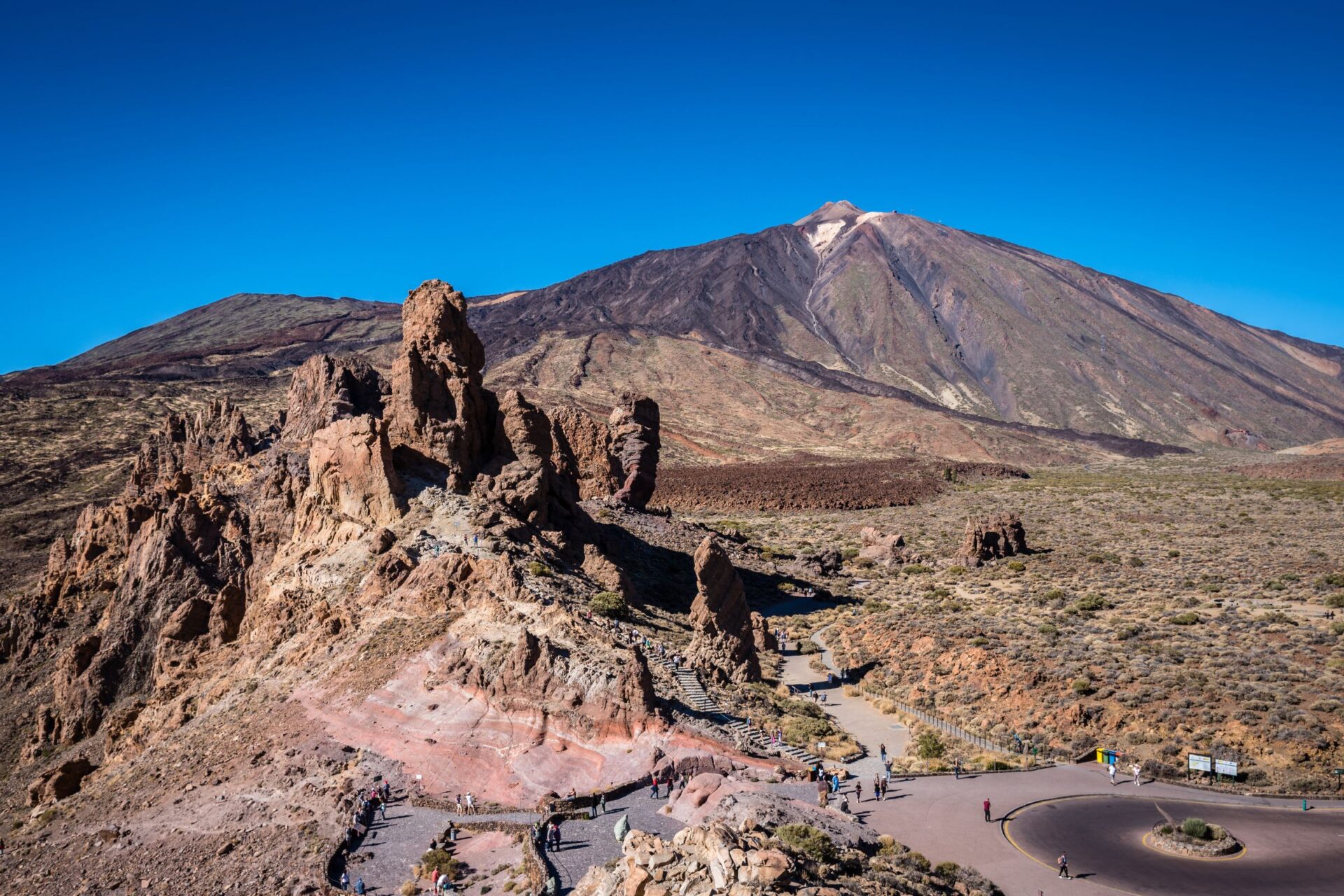
Convenience is huge—most day tours pick up from both the north and south of the island.
When I want to dig deeper, guided adventures are my go-to. Guides share stories about the Dragon Tree, point out hidden spots, and handle the details so I can just enjoy.
On one full-day tour, I hit Masca, wandered Icod’s old center, and found local food markets I’d have missed on my own. Small group tours make it feel more personal.
Planning Day Trips Around Northern Tenerife
When I plan a day trip, I pick my must-see spots first. Here’s what I never skip:
- The Ancient Dragon Tree: It’s the symbol of Icod and a northern Tenerife highlight.
- Garachico’s Lava Pools: A swim here is always refreshing.
- Masca Village: Stunning views and great hiking up in the mountains.
- El Teide National Park: The volcano and lunar landscapes are just a scenic drive away.
I like to include a couple of villages, leaving time for cafes and viewpoints. If I’m not driving, bus tours cover most of the same places and leave from resorts or the city.
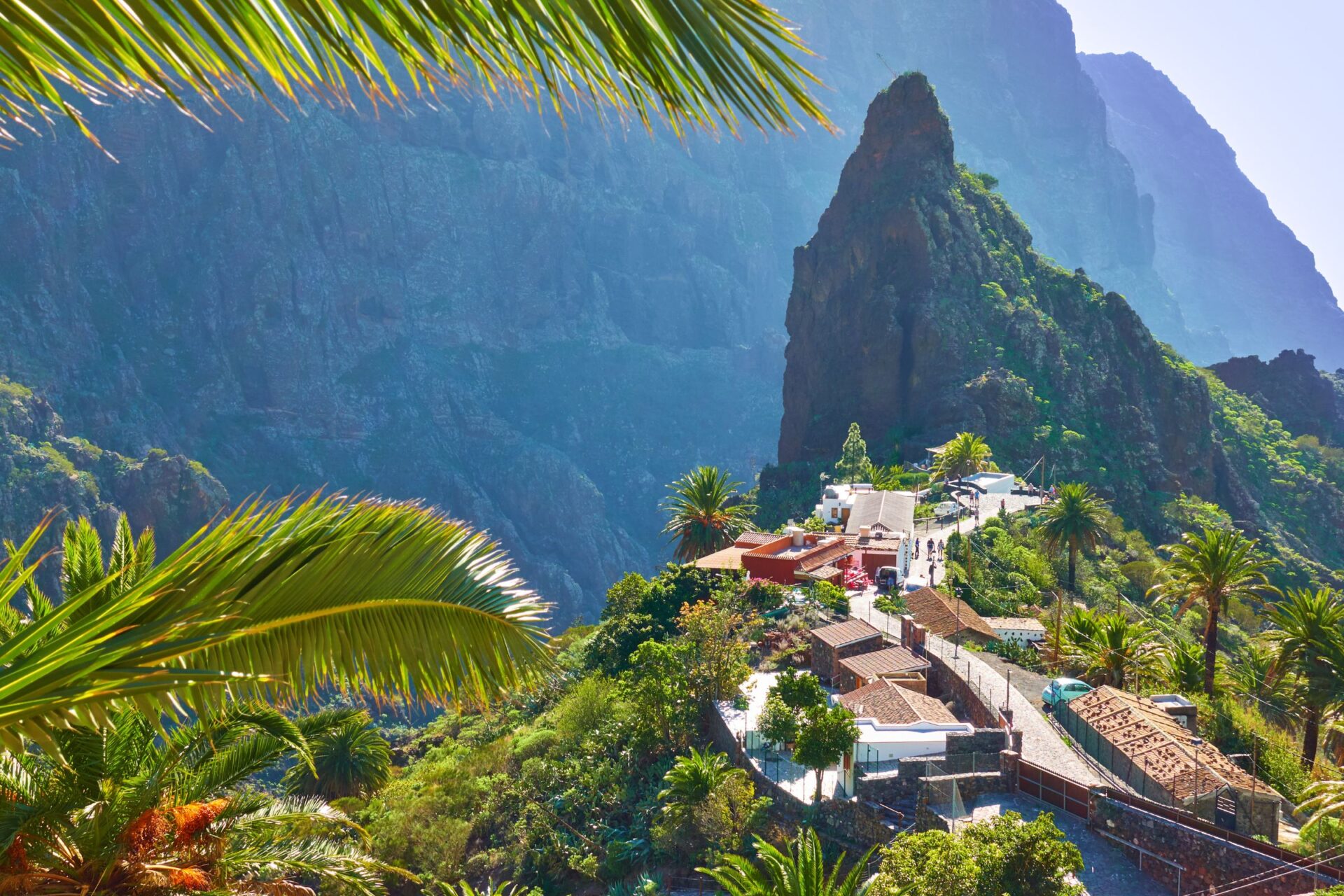
Free Cancellation and Booking Tips
I always look for booking flexibility—plans change, right? Most tours around Icod de los Vinos offer free cancellation, sometimes up to 24 hours before.
When I compare options, I check cancellation policies first. I also look for tours that include insurance or easy rebooking.
Online booking sites make reserving ahead pretty painless. I always read reviews, especially the recent ones, to see what people say about the guides and transport.
If a tour isn’t clear about policies, I skip it for one that is.
Likely to Sell Out: Popular Experiences
Some Icod de los Vinos experiences fill up fast. The Dragon Tree and full-day tours around northern Tenerife are always in demand, especially in busy seasons or on weekends.
I learned the hard way—one summer I waited too long and missed out on a village tour.
Nature and wildlife tours book up quickly too, since small groups make them more personal. If I want a top-rated activity, I book at least a week in advance, especially if there’s free cancellation.
For last-minute plans, I keep a backup list in case my first pick is full.
Global Connections: From Tenerife to the World
When I traveled to Icod de los Vinos, I realized the Ancient Dragon Tree isn’t just a local symbol. It’s a living bridge, connecting Tenerife to travelers and stories from all over.
Its presence reminds me of centuries of exploration, trade, and shared memories that stretch across continents.
Cultural Influences from Europe, Africa, and Beyond
When I wander the streets of Icod de los Vinos, I catch echoes from all over the world. The town’s architecture mixes touches from Spain, Portugal, and even Italy.
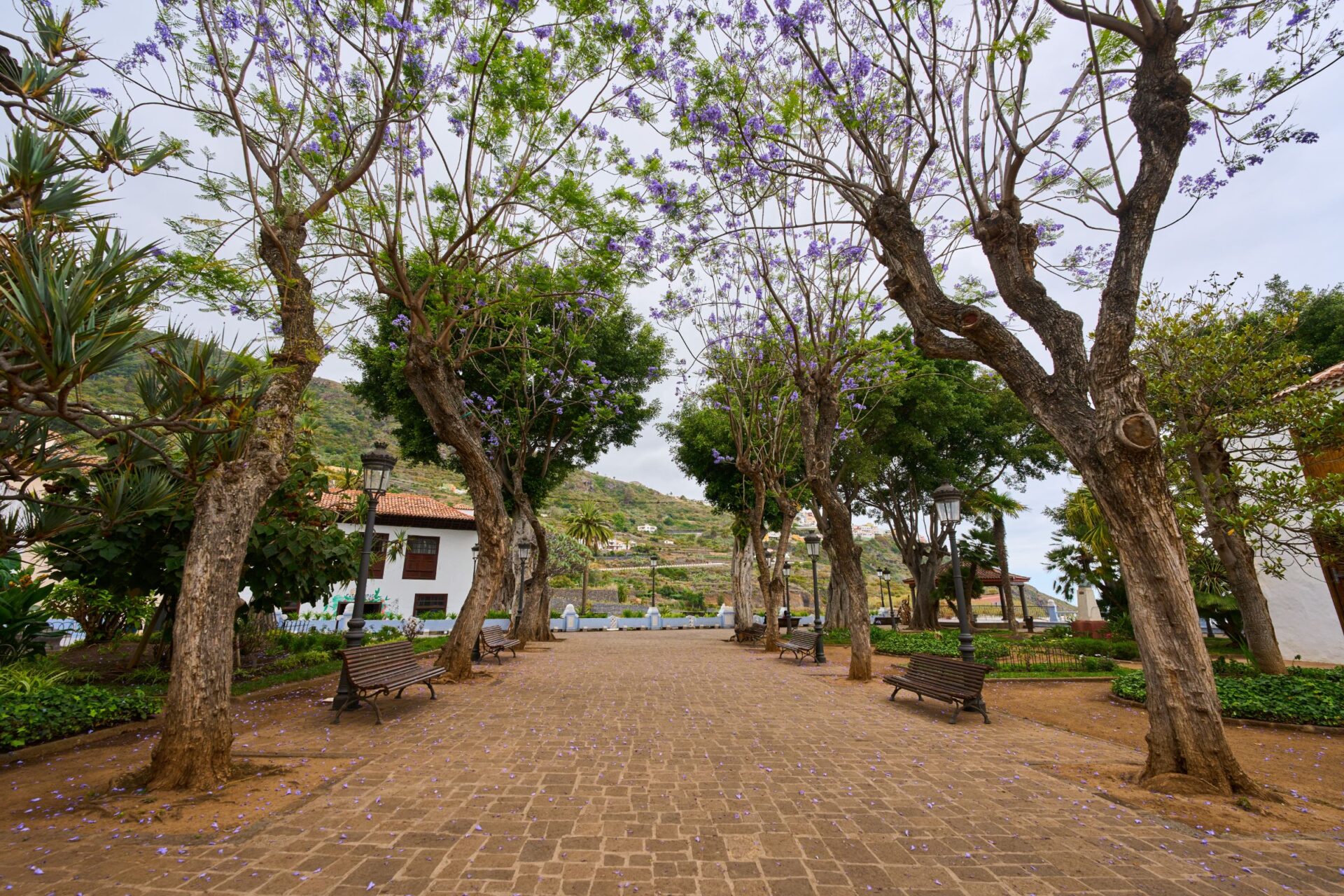
Cafés here serve pastries that remind me of lazy mornings in France. Bright tiles on the walls pop with designs I once admired in Morocco and Tunisia.
Travelers from northern Europe—places like Sweden, Finland, and Norway—bring their own traditions to the mix. I’ve chatted with visitors from Malta, Greece, and Croatia, and it’s funny how they find pieces of home in the festivals or open-air markets.
Tenerife’s port history still connects it to the Mediterranean, North Africa, and even places like Israel and Turkey. Old trade routes have left their mark.
Locals love to share stories about sailors from Cape Town, Egypt, or Robben Island who stopped here before crossing the Atlantic. The town has always served as a crossroads, blending influences from every direction.
Memories, Guests, and Personal Stories
I’ve sat under the Dragon Tree with people whose travel stories are as wide-ranging as the winds. Some folks come for the legend, others just for a bit of shade, but everyone seems moved by the tree’s quiet presence.
Once, I shared a bench with an American couple tracing their roots back to Spain. Nearby, a group from South America reminisced about sailing journeys that started right here.
It’s not unusual to see guests from Portugal swapping stories with Moroccans about childhood flavors and family gardens. These moments make me think the Dragon Tree is more than a landmark—it’s a living guestbook.
Every traveler leaves something behind among its roots.
Legacy of Exploration and Sailing
When I stand by the port, I can’t help but think about how Tenerife always faces the horizon. Back in the days of tall ships and quick little boats, explorers from Spain, Portugal, and Italy actually left from these same shores. Some sailed off toward the Americas, while others tried their luck finding routes to Africa or Asia.
I once picked up some old maps in a cluttered local shop. They pointed out stops like Cape Town, Robben Island, and even the Egyptian coastline. Sailors would return with spices, seeds, and wild stories that somehow just ended up woven into daily life here.
Even now, you’ll overhear marina chatter in a mix of accents—Norwegian yachters, Greek island hoppers, and the occasional Turkish backpacker swapping tales.
I spot hints of those old journeys everywhere, from street names to half-remembered legends. There’s this sense that the spirit of exploration never really left. Tenerife’s ancient tree, in some odd way, still connects to a world that keeps getting bigger.

